How Much Money Does A Wind Turbine Technician Make
What skills does it take to become a wind turbine technician in 2021? Is the job market good? Will it keep growing? Is wind energy an industry worth getting into for the long haul? How dangerous is it working on these massive machines?
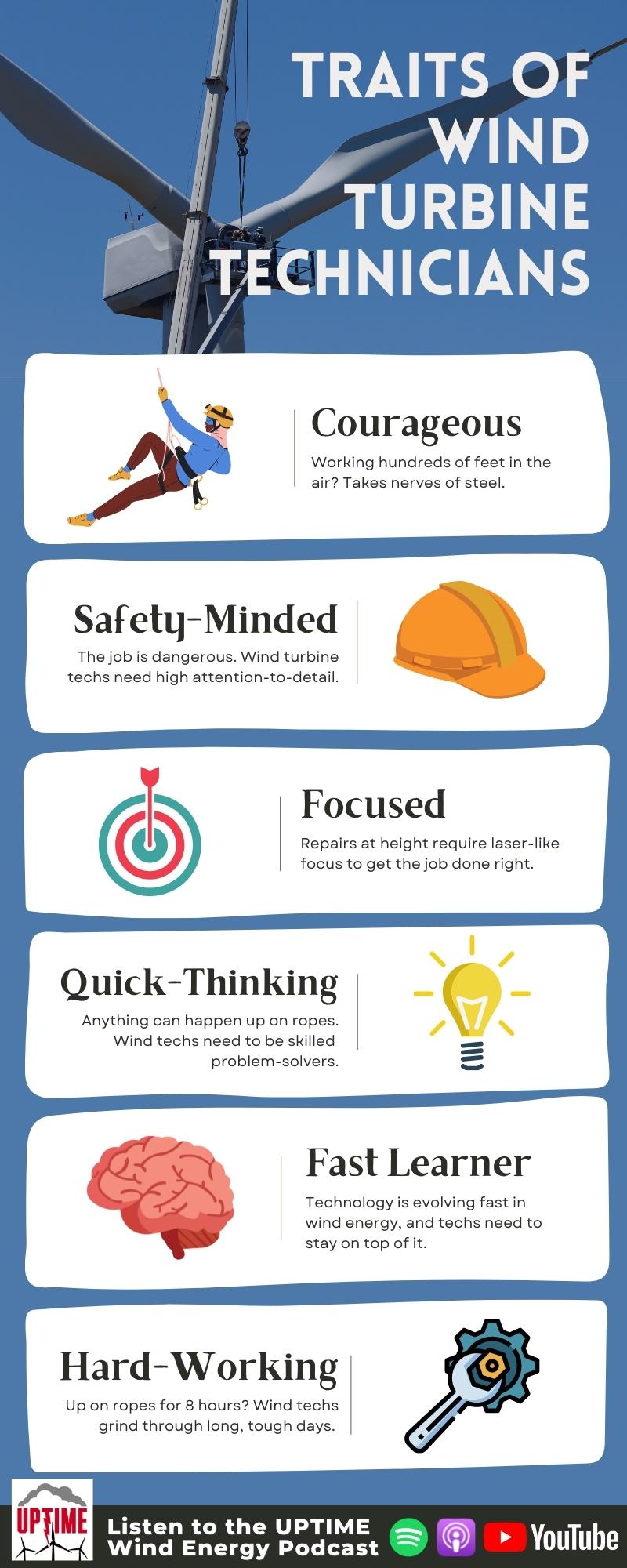
In this guide to working in the wind industry as a turbine technician, we'll cover all the basics with statistics, skills, salaries, concerns and job forecasts. Wind turbine technicians, knowns as wind techs, should continue to be in great demand in the future, but do your research below and find out if this career move is a good one for you and your family. Listen below to our podcast on this topic:
Wind Turbine Technician Jobs FAQ
Let's start with a few quick questions and answers, then keep reading for a deep dive into the wind tech jobs market.
Is being a wind turbine technician dangerous?
The wind energy industry has a strong safety record and excellent training, which, though there are risks, results in very few fatalities and bodily injuries each year. Wind turbines are very large, powerful, electricity-producing machines, so there is always inherent risk in servicing and maintaining them. With improvements in PPE (personal protective equipment) and new, improved safety protocols along with advances in safety technology, the industry continues to get safer each year.
How do I become a wind turbine tech?
Wind techs need to be at least 18 years of age and must complete a certificate course at a community college or technical school. On-site work is typically required as part of training, and many wind turbine technicians in training will adopt narrower focuses of study in addition to their general studies, such as in hydraulic, electrical, braking or other systems that are part of the wind turbine power generation and maintenance ecosystem. New wind techs should expect to complete at least 12 months of on-the-job training.
Do wind turbine techs need a college degree?
No, a college degree is not required. But, wind turbine technicians will need a nonsecondary nondegree award, which includes but is not limited to a completion certificate from a trade school.
Do wind turbine technicians travel?
Some windtechs live near one main site that they help to maintain, whereas others can be employed as traveling technicians who might specialize in a certain focus area or with a specific type of turbine, gearbox, etc. Travel can depend on the level of expertise and the desire of the worker. Yet, remember that because of the remote nature of wind farms–they are constructed in very rural, often difficult to reach locations–even for a wind technician who lives near one main wind site, he or she may have to drive one or more hours just to reach the site each day.
How much do wind turbine technicians make?
The median salary of a wind turbine technician in May 2020, according to the U.S. Bureau of Labor and statistics, was $56,230 ($27.03/hr). Salaries for wind techs range from $40,000 to over $80,000 per year.
Quick Links to Sections in this Article
Use the handy guide below to jump around to any section in this article.
How Much Money Does a Wind Turbine Technician Make?
According to the U.S Bureau of Labor Statistics, the median salary of a wind turbine technician in May 2020 was $56,230 ($27.03/hr).
To break this down a bit further, the U.S. Bureau of Labor also shared statistics on the lowest and top 10% of earners:
the lowest 10 percent earned less than $40,490, and the highest 10 percent earned more than $83,580.
US Bureau of Labor Statistics
Wind turbine technician job projections were anticipated to climb 61% by 2029, from 7,000 jobs in 2020 to 11,300 jobs in 2029. This projection, however, was created in the year prior to the announcement of the Biden administration's wind power initiatives, so these numbers may be adjusted–higher–in next year's report.
Go here to see full projections on job creation from the 2020 report.
Biden Administration Clean Energy Initiatives & Job Creation
In 2021, President of the United States, Joe Biden, announced an ambitious initiative to create tens of thousands of jobs in wind energy through the support for new off-shore wind projects. The administration has set a target of deploying 30GW of offshore wind power by 2030, which they expect to have the following effect:
Meeting this target will trigger more than $12 billion per year in capital investment in projects on both U.S. coasts, create tens of thousands of good-paying, union jobs, with more than 44,000 workers employed in offshore wind by 2030 and nearly 33,000 additional jobs in communities supported by offshore wind activity.
– FACT SHEET: Biden Administration Jumpstarts Offshore Wind Energy Projects to Create Jobs
The Biden administration hopes to reach 100% clean energy by 2035, and the renewable energy industry already employs over 410,000 workers in the U.S., though that figure includes all renewable energy sources, not just wind power.
Does Green Tech Create Jobs? Or Eliminate Them?
According to Cleanpower.org, wind power employs 120,000 Americans in various types of of jobs (not just turbine techs). It also employs Veterans at a rate 67% higher than the national average.
In the UK, wind power employs over 44,000 people and globally there were approximately 1.17 million wind energy jobs as of 2019.
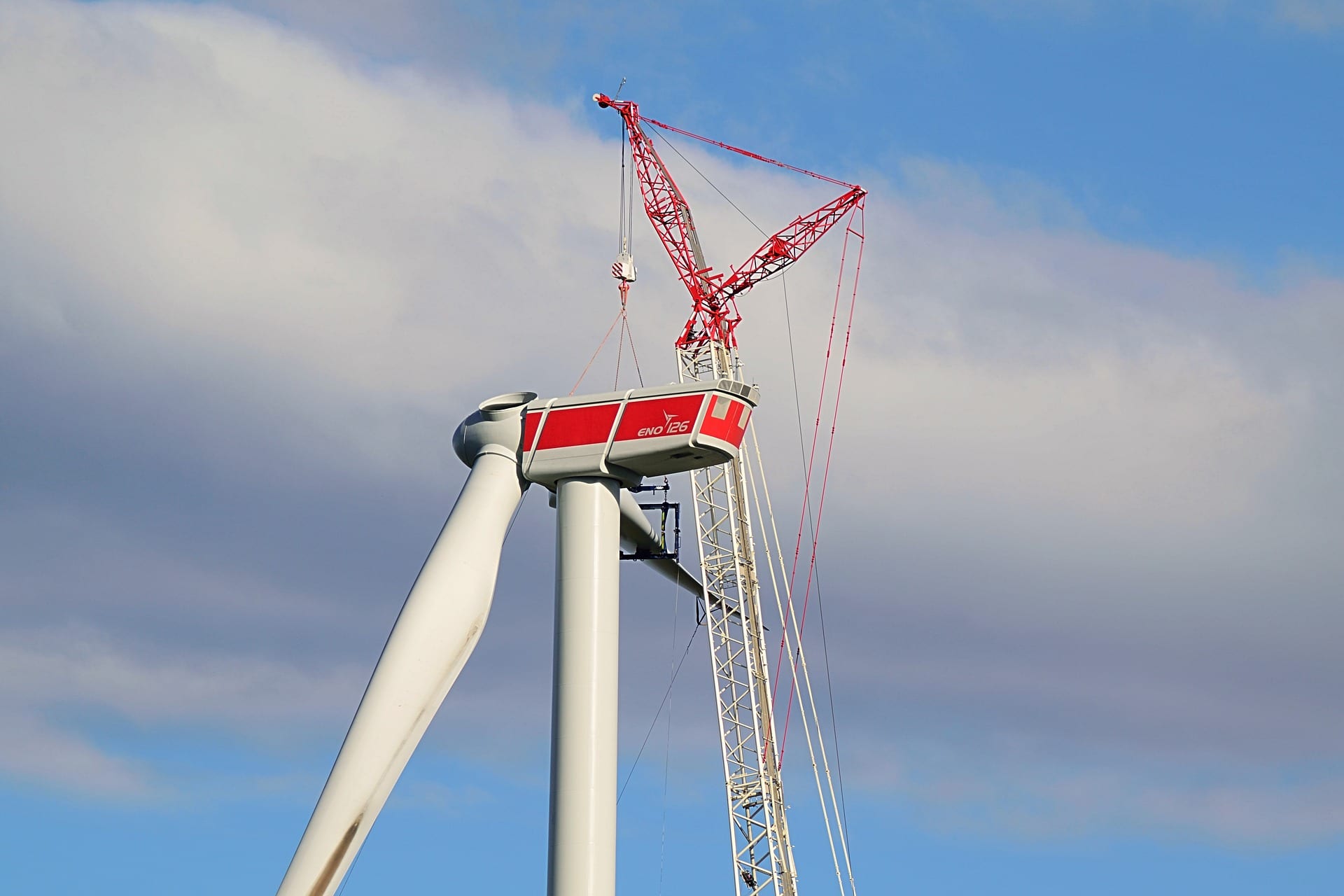
An interesting fact about renewable energy sources and electric vehicles–all of which are better for the planet–is that these plants and vehicles tend to be simpler to operate and maintain. Solar electricity plants require vastly fewer workers to operate and maintain, compared to a coal or gas plant, according this Forbes article.
Although the construction work in creating these plants will employee lots of workers (one of many peripheral industries supported by a push toward renewable energy), many of those jobs won't continue when the work is completed, leaving a turnkey electric plant that requires much less ongoing maintenance. It's an interesting thought to consider for green tech as an industry: simple, efficient energy sources that can run well without much human intervention don't require as much, well, human intervention.
Yet, with more wind turbines going up, demand for wind turbine technicians should continue to flourish, especially as wind farms begin to show their age.
What Kind of Work is Needed to Maintain Wind Turbines?
Wind turbine technicians continue to be in demand due to the global increase in wind farms. As more wind farms are built and begin producing power, the job of maintaining them begins.
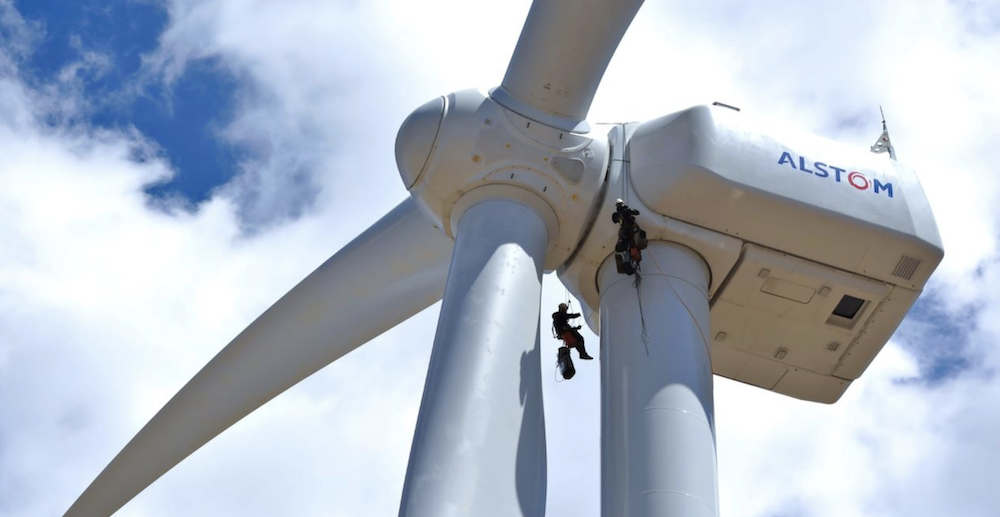
As wind turbines age, they need ongoing maintenance and repair. This can include:
- Regular inspections and monitoring of the electrical systems, nacelle and turbine blades
- Blade inspections require operators using robots or drones, as well as rope access technicians in some cases
- Nacelle and interior electrical components require skilled technicians as well
- Repairs & Retrofit upgrades
- Inspect, assess and repair damage due to lightning strikes, leading edge erosion, general wear and tear
- Install power curve upgrades, sensors and other retrofit equipment to restore or improve power output performance
These jobs range in technical skill and the safety certifications required, as wind turbines are powerful machines. Though the wind industry has a strong safety record, it can be dangerous work; the electricity generated can kill, as can working at height or up on ropes, in the case of rope access technicians.
It's a testament to the thoroughness of safety training and safety checks on the job that despite the risk and inherent danger, wind turbine technicians work with a high degree of safety.
Job Skills Needed
Not everyone is cut out for a career as a wind turbine technician. Though salaries are attractive and the idea of working outdoors can be quite inviting, wind techs must meet physical requirements and other job skills.
Keep in mind that the job is rapidly evolving with new technology like drones and robots. These are capable (and will become more so with each passing year) of performing many tasks at height that previously required a human to perform.
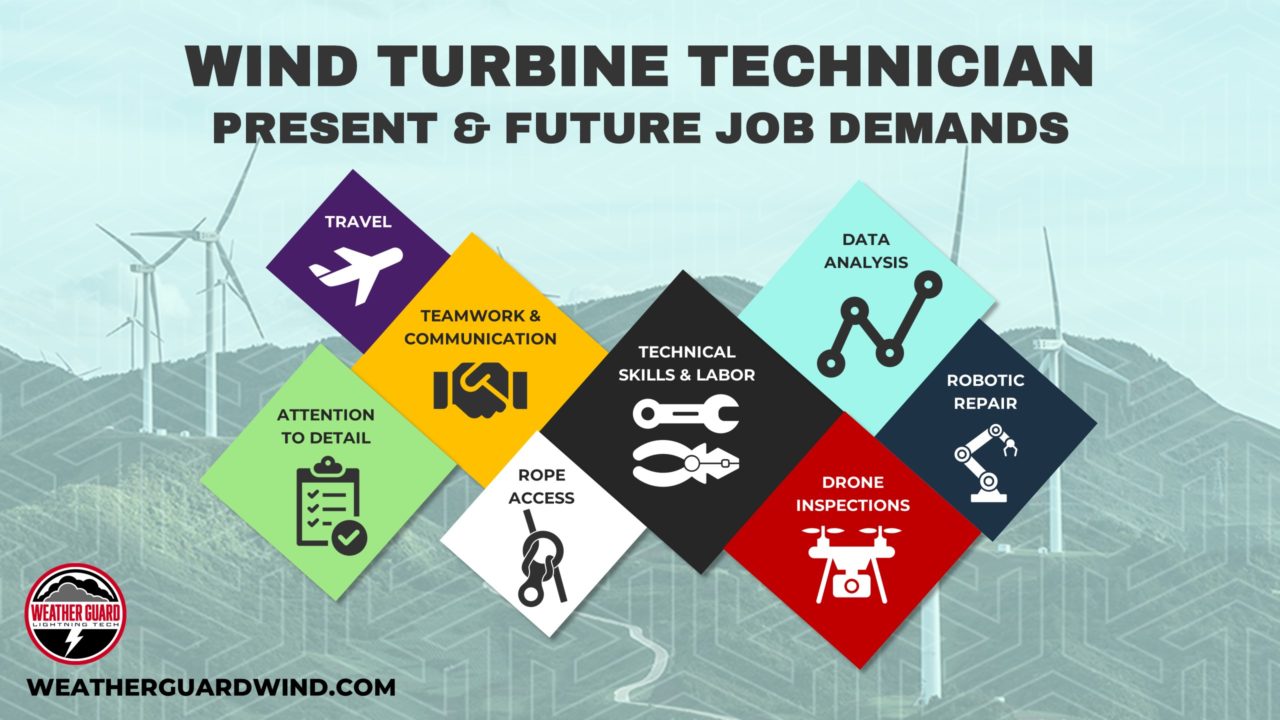
In the future, the job should be even safer and less physically demanding, with drones and robots completing many at-height tasks that previously required rope access.
Wind Technician Job skills include:
- Physical capability to lift heavy items, crawl, work at height or in confined spaces
- Good communication and interpersonal skills
- Rope access may be required
- Ability to gather and interpret data
- In the future, drone and robots may perform some repairs, and technicians may be asked to learn to control and pilot them
- Openness to working in nature, in remote areas, potentially off-shore
- Open-minded attitude to learning new skills as the job evolves
Check out this video below for a glimpse into one of the training courses that wind techs will go through:
Lifestyle & Travel Considerations
Working as a wind turbine technician will usually require living in more remote locations, and this is in part because of geographic considerations. Wind turbines are almost always in rural or remote areas where land is cheaper and plentiful, wind speeds are higher and the topography is favorable. For those who want a big-city life, wind tech may not be a great fit, as most sites are far out from the big city lights.
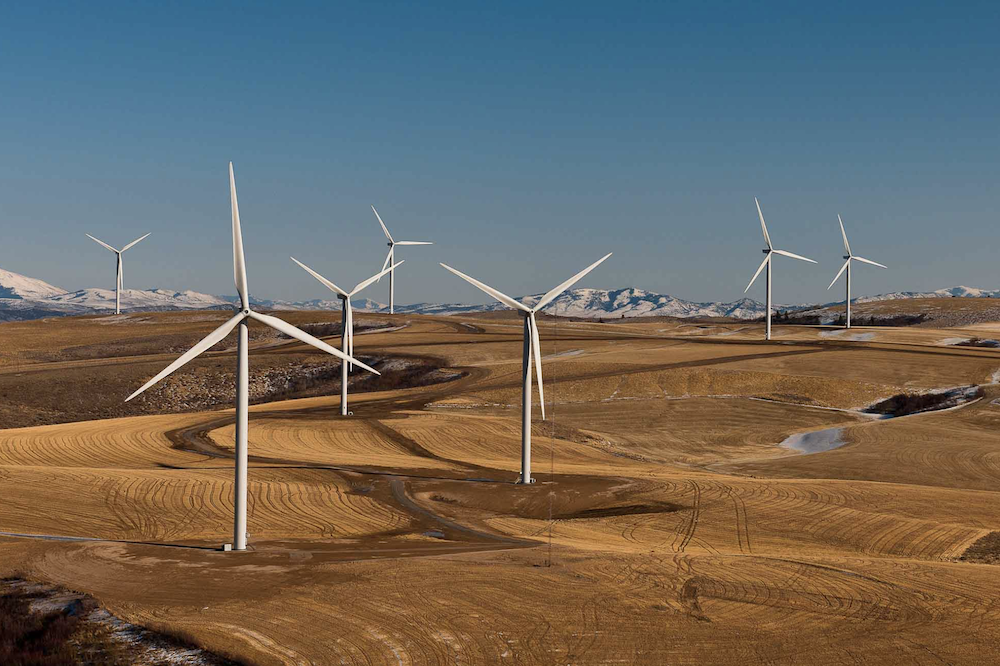
For those who have a strong sense of adventure, enjoy being out in nature and would find happiness living and working in smaller, more rural locations, it can be a great fit.
Many wind turbine techs travel all over as contract workers on different sites, which can be a terrific fit for those wanting to travel and see the world.
Wind Tech Jobs Are Going Off-Shore, Too
It's also important to note that wind power is not just land based, as off-shore wind power is increasing at a very rapid rate. Wind technicians also need to be potentially comfortable working in a marine environment, as some of the world's biggest wind turbines are now built in off-shore wind farms.
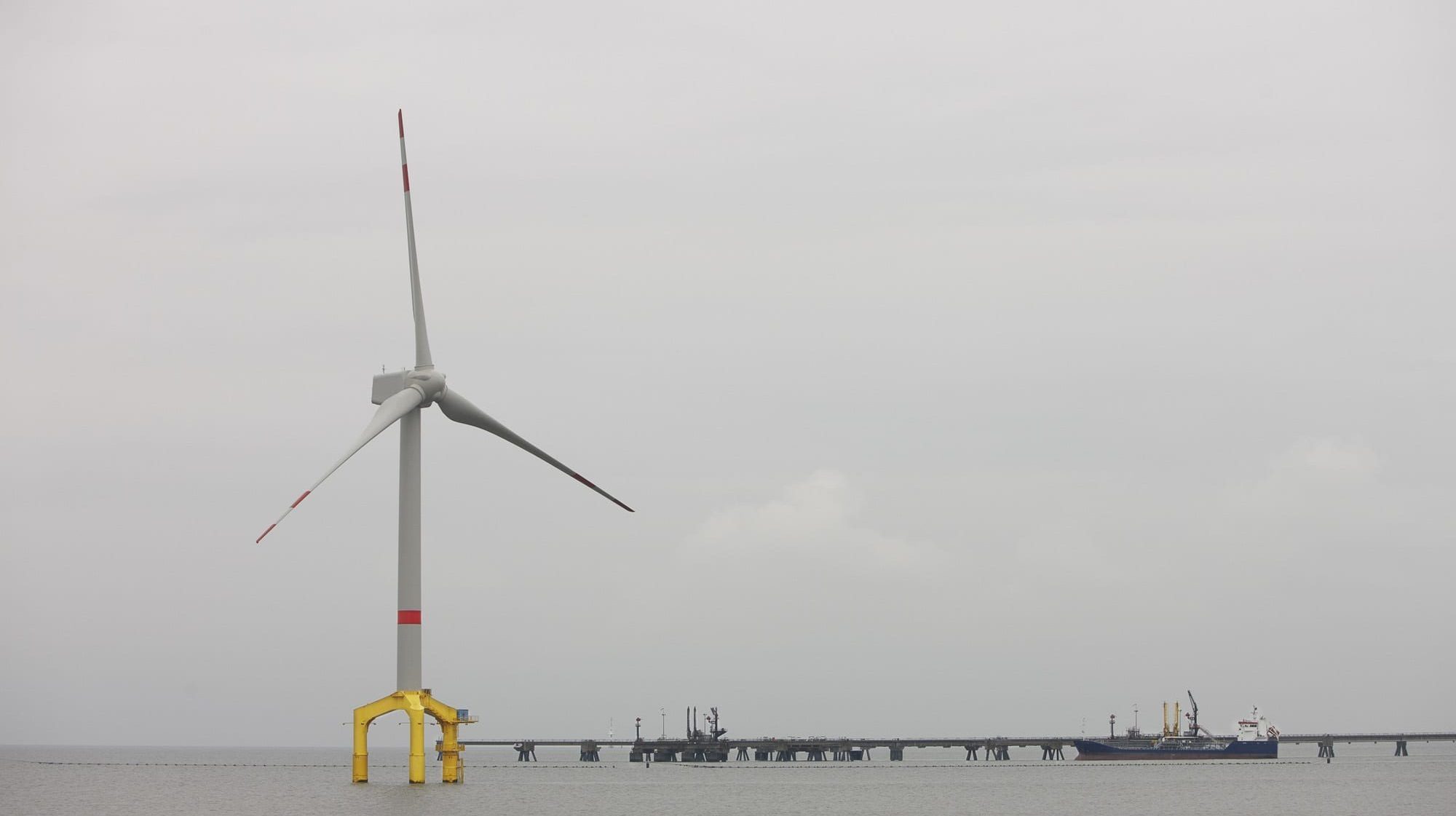
Is Being a Wind Turbine Tech Dangerous?
Before embarking on a new career path, be sure to do as much research as you can. In this excellent article by Windpowerengineering.com, Michelle Froese outlines safety tips for windtechs.
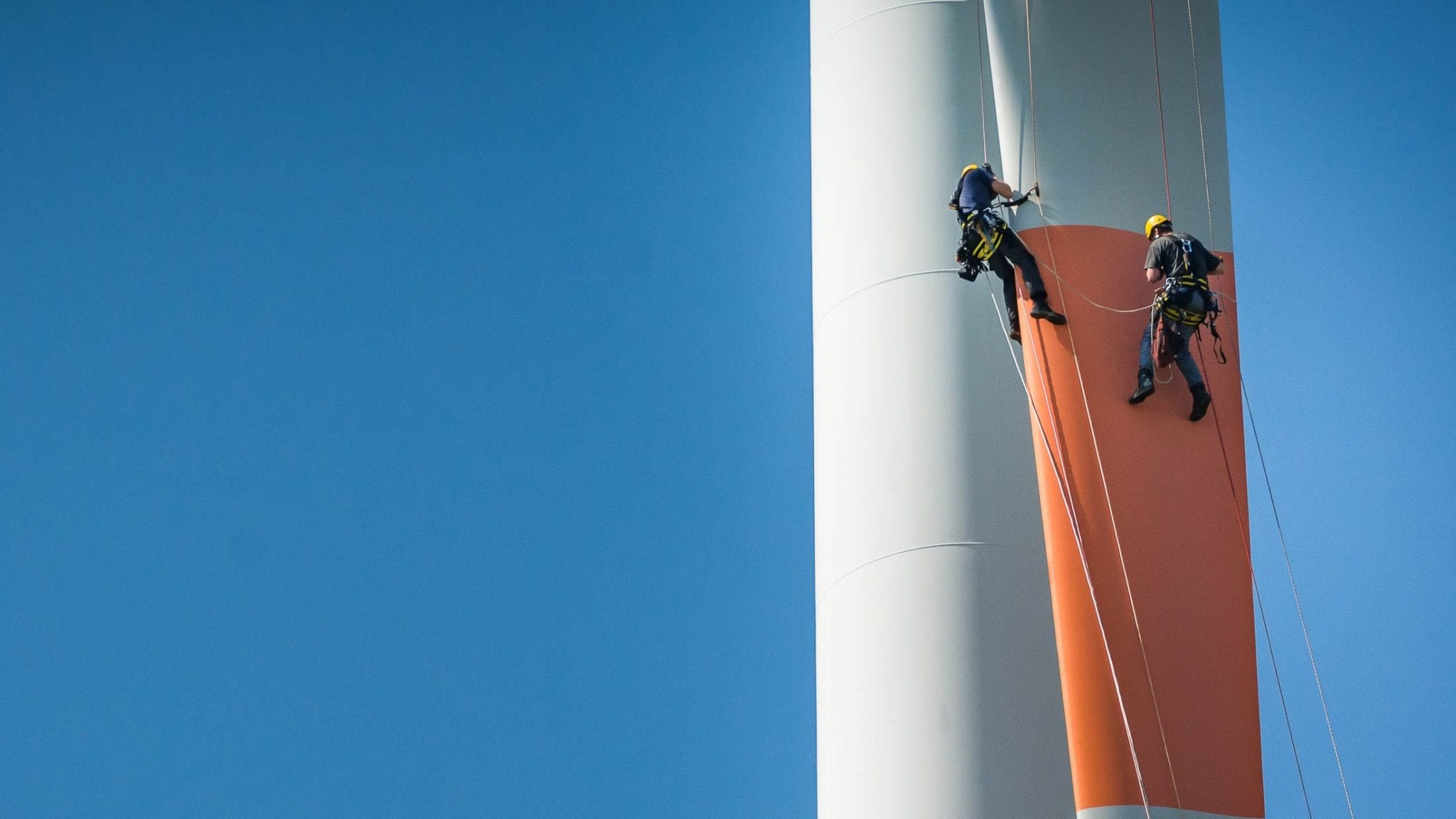
This white paper on wind turbine safety by the American Society of Safety Professionals explains the vast list of OSHA requirements for wind professionals, including the training required for wind technicians to do their job properly and come home safely.
In the UK, safety data reveals only one fatal accident in 2021. In the U.S., statistics are difficult to come by, but the track record of safety appears strong.
It's important to know the risks–four of which are outlined below–while also understanding that proper safety training makes working in the wind industry quite safe.
Four Main Safety Hazards of Wind Turbine Jobs
OSHA provides significant guidelines on all aspects of safety. Four of the biggest safety risks for wind technicians include accidents and bodily injuries from:
- Slip and fall
- Rope access and tower climbs involve risk of falls from heights that can kill
- Electrocution
- Electric shock protection is paramount, as wind turbines generate significant electricity
- "Struck by"
- Risk of being struck by moving or falling objects
- Caught in/between
- Risk of being caught in or between machinery or heavy objects
Remember though: safety data shows that incidences of human bodily injuries and deaths are very low, and proper safety training is stressed throughout the industry. Advances in technology and PPE are making daily life as a wind farm worker safer than ever.
Automation, Drones and Robots Improve Worker Safety
Additionally, it's important to note that technology is vastly improving safety for workers now and increasingly in the future.
For more on what a wind turbine rope access technician does on a daily basis, check out the video below:
Online Wind Technician Job Listings
If you're ready to apply for a wind energy job, including one as a wind turbine technician, check out some of the career sites below (we are not affiliated in any way).
There are lots of wind energy job listings on various sites, and it's a great time to being looking at applications and seeing what employers are looking for. Below you'll find links to wind technician jobs postings for some of the most popular recruiting websites.
- Zip Recruiter listings for wind technicians
- Glassdoor.com listings for wind tech jobs
- Careerjet listings for wind technician jobs
- Linkedin job listings for wind energy jobs
- Indeed.com wind power jobs
- Careerbuilder.com jobs in the wind energy sector
- Monster.com job listings for wind turbine technicians
- Careerstructure.com wind turbine technician job listings
- Euroenergyjobs.com wind technician job postings
More Governmental Resources
- US Bureau of Labor and Statistics – Wind Technicians
- Energy.gov Career Map for Wind Technicians
Learn More About Wind Energy Tech
If you want to increase your knowledge and become a stronger candidate for a job in the wind industry, be sure to check out the Uptime Wind Energy Podcast.
Watch our episode on wind tech jobs here:
We interview CEOs and business professionals who are making waves in the industry with new technology, solutions and ideas to improve wind power. It's available on YouTube and all your favorite podcast platforms; listen now!
How Much Money Does A Wind Turbine Technician Make
Source: https://weatherguardwind.com/wind-turbine-technician-jobs/
Posted by: mcnultythisings.blogspot.com

0 Response to "How Much Money Does A Wind Turbine Technician Make"
Post a Comment